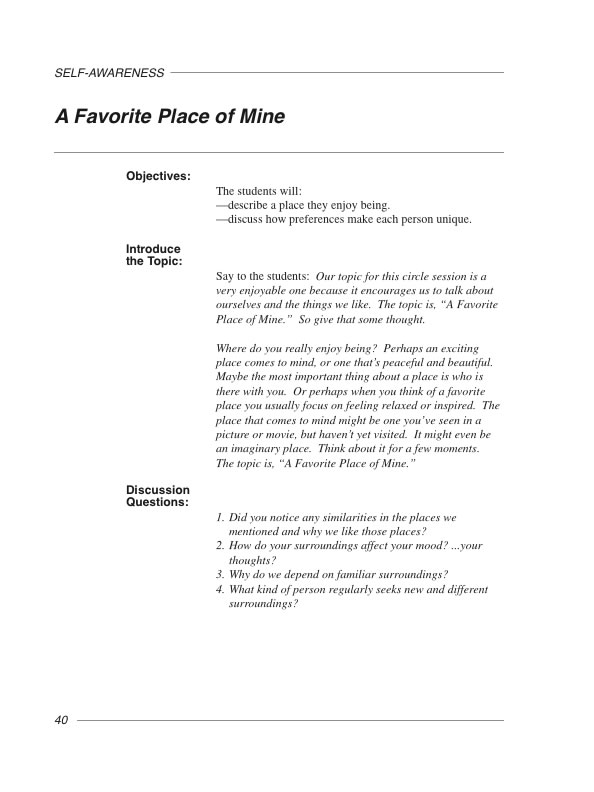Many of us don’t realize that by simply listening to students talk and share their inner thoughts and issues we can immensely facilitate their personal development. It’s by sharing their thoughts and feelings and experiences openly and in a non-judgmental setting that students gain important life skills and self-knowledge. Once they see that we do not intend to “change” them and that they may speak freely without being “wrong,” students find it easier to examine themselves and begin to see areas where they can make positive change in their lives. It’s through sharing and being truly listened to that students clarify their thoughts, and learn effective methods of self-expression. With this kind of true listening they are encouraged to go deeper, find their own direction, and express and face strong feelings that may at other times be hidden obstacles to their growth. The important point is that students really can solve their own problems, develop self-awareness, and learn skills that assist them in becoming responsible members of society if they are listened to effectively.
The Perfect Strategy
The Sharing Circle, which provides both the opportunity for students to be listened to, and to listen to others, is the prime teaching tool that we have developed in our curriculum guides to foster these valuable life skills in all students K – 12.

A Listening Forum
Just as the Sharing Circle provides a process for students to learn about themselves through self-expression and exploration, it also teaches students to be good listeners. The rules of the Sharing Circle (listening to the person who is speaking, without probing, put-downs, or gossip) demand that each student give active attention to the speaker. Through the regular practice of good listening by the teacher or counselor leading the circle, the students begin to internalize good listening habits.
Your Sharing Circles
Today we are providing two Sharing Circle topics designed to promote good listening from The Sharing Circle Handbook, Topics for Teaching Self-Awareness, Communication, and Social Skills for students in grades K-12. The topics are, Something I Like to Do Alone and Something I Like to Do With Other People.
 Here’s Your Monday Morning Sharing Circle. Enjoy!
Here’s Your Monday Morning Sharing Circle. Enjoy!

Do you want more information?
• Leading a Sharing Circle
• Sharing Circle Rules
• Books and Resources
• Free Activities
• Subscribe
Go here:
Here’s How It’s Done
Gather everyone into a circle. Explain the rules for sharing, and get agreement from everyone that they will follow the rules.
Sharing Circle Rules:
- Everyone gets a turn to share, including the leader.
- You can skip your turn if you wish.
- Listen to the person who is sharing.
- There are no interruptions, probing, put-downs, or gossip.
- Share the time equally.
After everyone has shared, who wants to share, ask the discussion questions.
You can check the book out HERE.
Just click HERE to open a fully reproducible PDF of this activity and experience sheet…
If you like our blog resources and would like to receive them regularly, please subscribe here or on our website at www.InnerchoicePublishing.com
If you are already a subscriber, I hope you find this activity valuable. Help us grow our blog by sharing these activities and encouraging others to join. Thank you.
Thanks so much for reading!
Susanna




